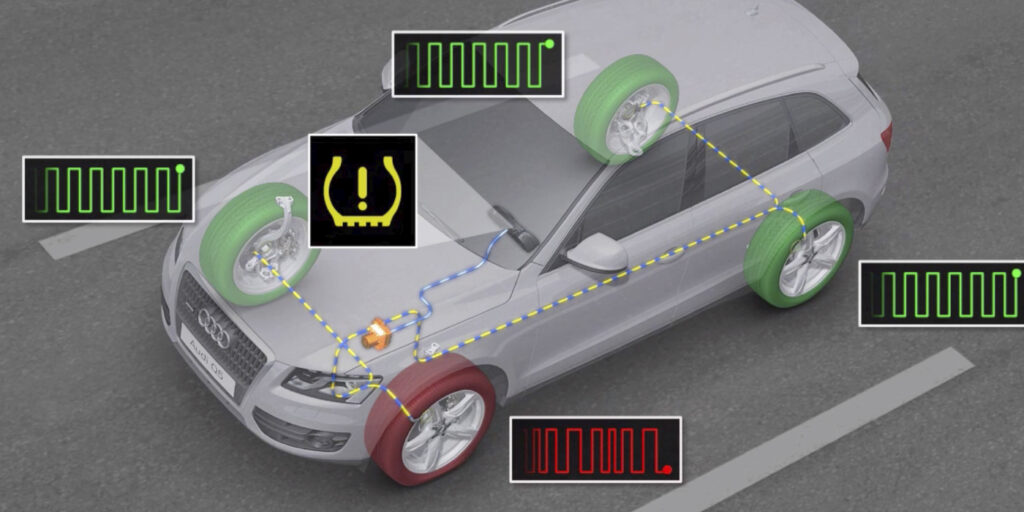Tpms calibration means adjusting the sensors of a vehicle’s tire pressure monitoring system. The tpms calibration ensures the validity of tire pressure readings, ensuring safety.
Proper tire maintenance is crucial for vehicle safety, and the tire pressure monitoring system (tpms) plays a significant role in ensuring tire safety. The tpms calibration process involves resetting or relearning the tire pressure sensors to ensure accurate readings. Inaccurate readings due to sensor malfunctions or replacement may lead to under or over-inflation, leading to tire failure, poor handling, and reduced gas mileage. The tpms calibration is necessary after installing new tires or rotating tires to ensure the system’s sensors recognize the new location of each tire. As a vehicle owner, it is crucial to understand the importance of tpms calibration in ensuring safety on the road.

Credit: www.tomorrowstechnician.com
What Is Tpms Calibration?
Tpms calibration is the process of resetting or adjusting the tire pressure monitoring system. This procedure ensures that the sensors accurately track the tire’s air pressure and issue warnings when pressure falls below the recommended limit. Tpms calibration is essential as low tire pressure increases the risk of accidents, reduces fuel efficiency, and decreases tire lifespan.
By maintaining the recommended air pressure level, drivers can enjoy a safer ride with better handling and braking. It is recommended to carry out tpms calibration every time you inflate, rotate, or replace your tires. Always use a trained technician and reliable equipment to avoid any inaccuracies and ensure optimal performance.
Types Of Tpms Sensor Systems
Tpms or tire pressure monitoring system, is standard technology in modern vehicles. There are two types of tpms sensor systems in the market- direct and indirect. In a direct tpms, sensors monitor tire pressure while tire rotation, and send data to the car’s computer.
Indirect tpms uses the abs and wheel speed sensor. When a tire pressure is low, the diameter changes, and wheel speed is affected, signaling the car’s computer. Indirect tpms is less accurate than direct, as external factors like road conditions or temperature can affect the measurement.
However, indirect systems cost less than direct and are used in a variety of vehicles. Understanding the differences between direct and indirect sensor systems is critical in calibrating the right tire pressure for your vehicle.
Calibrating the Tire Pressure Monitoring System (TPMS)
Understanding The Tpms Calibration Procedure
Tpms calibration is an important process in ensuring accurate tire pressure readings in your vehicle. Calibration needs to occur when installing new tires, rotating tires, or changing tire size. Several factors can cause tpms calibration to fail, such as tire damage, sensor malfunction, or electrical interference.
Manual tpms calibration steps typically involve using a reset tool or following a specific sequence of button presses on the dashboard. Automatic tpms calibration steps can vary depending on the vehicle model and may require driving at a certain speed for a period of time.
It’s important to follow the correct calibration procedure for your vehicle to ensure safe driving and optimal tire performance.
Test And Reset Tpms System
Tpms calibration refers to the process of testing and resetting the tpms system in your vehicle. To carry out this process, you will need a few tools, such as a tire pressure gauge and a tpms reset tool. One way to reset the tpms system is to locate the reset button in your vehicle and hold it down until the indicator light flashes.
Meanwhile, testing the system involves checking the pressure of each tire and ensuring they correspond to the recommended levels. You can use a tire pressure gauge to check the pressure of each tire and compare them to the values indicated in the vehicle’s manual.
By performing tpms calibration regularly, you can ensure your vehicle functions safely and efficiently on the road.
Importance Of Tpms Calibration For Vehicles
Maintaining safety and performance in vehicles is crucial, and tpms calibration plays a major role. Proper calibration of tpms systems helps to warn drivers about tire pressure issues, avoiding potential accidents. In addition, properly calibrated tpms systems improve vehicle performance and fuel efficiency, minimizing environmental impact.
It is essential to note that tpms calibration is also a legal requirement in most countries. Failing to meet this legal requirement can result in fines and other legal consequences. Regular calibration of tpms systems ensures that vehicles operate safely and efficiently in accordance with regulations.
Overall, tpms calibration is a critical component for proper vehicle maintenance and safe driving.
Frequently Asked Questions On What Does Tpms Calibration Mean
What Is Tpms Calibration And Why Is It Important?
Tpms calibration is the process of resetting the sensors in your vehicle’s tire pressure monitoring system. It’s important because correctly calibrated sensors ensure accurate readings, which can improve safety and save you money on fuel and tire replacement costs.
How Often Should Tpms Calibration Be Performed?
It is recommended to perform tpms calibration every time tires are rotated or replaced. If there is any change in tire pressure or size, calibration should be done promptly. Regular calibration helps to maintain accurate readings and avoid false alerts or warnings.
What Is Involved In Tpms Calibration And How Long Does It Usually Take?
Tpms calibration involves resetting the tire pressure monitoring system of a vehicle to accurately measure tire pressure. It can take around 20 to 30 minutes to complete the calibration process. It is important to have it done regularly to ensure safe driving and avoid tire-related accidents.
Are There Any Signs That Indicate When Tpms May Need To Be Recalibrated?
Tpms may need recalibration if there is a warning light on the dashboard, if the tires have been changed or rotated, or if the vehicle’s sensor or battery have malfunctioned. Additionally, changes in temperature or altitude can also affect the system.
It is recommended to have tpms checked regularly to ensure accurate readings and proper tire pressure.
Conclusion
Tpms calibration is an essential aspect of ensuring that your vehicle’s tire pressure monitoring system is functioning optimally. By ensuring the calibration of your tpms, you can be confident in the safety of your vehicle and reduce the risk of accidents related to tire pressure.
Failing to calibrate your tpms may lead to inaccurate readings, which can lead to under or over-inflated tires that may have severe consequences. Regular calibration, at least once every 2 years, is recommended as it can help you stay on top of any tpms related issues and ensure that your vehicle is performing as intended.
It is always advisable to consult with an experienced mechanic to ensure proper calibration, as they have the necessary skills and equipment to complete the process effectively. So, don’t overlook the importance of tpms calibration and ensure that you prioritize it as part of your vehicle maintenance routine.


